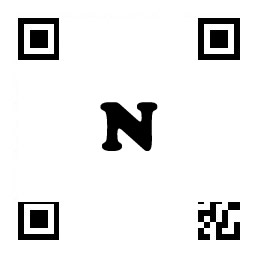规格
|
|
Antibody Conjugate:
|
Unconjugated |
|
Antigen:
|
Claudin |
|
Clonality:
|
Monoclonal, Polyclonal |
|
Clone ID:
|
Sampler Pack |
|
Label Type:
|
Unconjugated |
|
Label or Dye:
|
Unconjugated |
|
Reactivity:
|
Canine, Human, Mouse, Rat |
|
Reactivity abrv:
|
Cn, Hu, Ms, Rt |
|
Shipping Condition:
|
Wet Ice |
|
Target Gene:
|
Claudin |
|
Validated Application:
|
ELISA, Immunofluorescence, Immunohistochemistry, Western Blot |
|
Validated Application abrv:
|
IHC, IF, ELISA, WB |
|
Applications:
|
Cell Analysis |
|
Clone:
|
Monoclonal, polyclonal |
|
Conjugate:
|
Unconjugated |
|
Description:
|
Claudin Antibody Sample Pack, 80μg, Claudin Antigen, Canine, Human, Mouse, Rat Species Reactivity, Affinity Purified, 0.2μm Filtration, Unconjugated, Used for ELISA, Immunofluorescence, Tissue Staining and Western Blotting |
|
Gene:
|
Claudin-4 |
|
Format:
|
Liquid |
|
Gene Alias:
|
CPE-R, CPER, CPETR, CPETR1, WBSCR8, hCPE-R |
|
Host Species:
|
Mixed |
|
Purification Method:
|
Affinity Purified |
|
Quantity:
|
80μg |
|
Regulatory Status:
|
RUO |
|
Storage Requirements:
|
–5 to 30°C |
|
Type:
|
Primary |
|
Primary or Secondary:
|
Primary |
|
Monoclonal or Polyclonal:
|
Monoclonal, Polyclonal |
|
Gene ID (Entrez):
|
1364 |
|
Packaging:
|
1 Each |
|
Includes:
|
0.1% Sodium azide |
|
Target Species:
|
Canine |
储存
|
|
Store in freezer (-5 to -30°C). |
The purified, unconjugated antibodies in Claudin Antibody Sample Pack are specific to human, mouse, rat and dog Claudin. Validated applications for antibodies in Claudin Antibody Sample Pack are ELISA, immunofluorescence, tissue staining and Western blotting.
Applications: validated for ELISA, immunofluorescence, tissue staining and Western blotting (Please see the manual for recommended usage for each antibody.)
Reactivity: human, mouse, rat and dog Claudin (Please see the manual for species reactivity of each antibody.)
Product size: 80 µg pack size
Tight junctions are specialized regions of cell-cell contact that are particularly abundant in luminal epithelial cell sheets. In freeze-fracture electron micrographs, tight junctions are visualized as belt-like bands of anastomosing sealing strands (TJ strands) that completely encircle the lateral surfaces of each cell. TJ strands on adjacent cells are presumed to interact with each other to form a sort of 'molecular gasket' that prevents ions, water and other molecules from leaking between cells and thus, from one side of the sheet to the other. In addition to this so-called 'barrier' function, the 'fence' function of tight junctions plays an important role in maintaining epithelial cell-polarity by blocking the diffusion of membrane proteins between apical (luminal) and basolateral cell surfaces. Confinement of the glucose symport to apical surfaces allows glucose to be transported vectorially from the lumen, through the cell, and into the bloodstream. Several peripheral membrane proteins are associated with tight junctions including ZO-1, ZO-2, ZO-3 (members of membrane-associated guanylate-kinase family), cingulin, the 7H6 antigen, Rab-3b, symplekin. While their precise functions are not known, roles for these proteins have been suggested in tight junction assembly and maintenance; signal transduction; and the regulation of tight junction permeability.
Furthermore, a growing body of evidence suggests that actin filaments play a major role in regulating tight junction permeability. Until recently, the only transmembrane protein identified in association with tight junctions was occludin, a ~65 kDa protein with four transmembrane domains. Despite widespread expectation, a critical structural role for occludin in TJ strands was ruled out by the observation of apparently normal tight junctions formed between cells disrupted at both occludin alleles. Fortunately, a closer examination of isolated tight junctions uncovered two related ~22 kDa, four-transmembrane domain proteins, claudin-1 and claudin-2, with no similarity to occludin. In contrast to occludin, which induces only a small number of short strands at cell-cell contact sites when introduced into fibroblasts lacking tight junctions, claudin-1 and -2 induce networks of strands characteristic of true tight junctions. Though inconclusive, these findings suggest that claudin-1 and -2 are major structural components of TJ strands and that occludin plays some other accessory role. Interest in the tight junction field continues to rise following the discovery of claudins -3, -4, -5, -6, -7, -8, -15, and -16, and experimental results suggesting that tight junctions in different tissues are comprised of distinct sets of claudin family proteins.

























 微信小程序
7X24小时在线咨询
微信小程序
7X24小时在线咨询